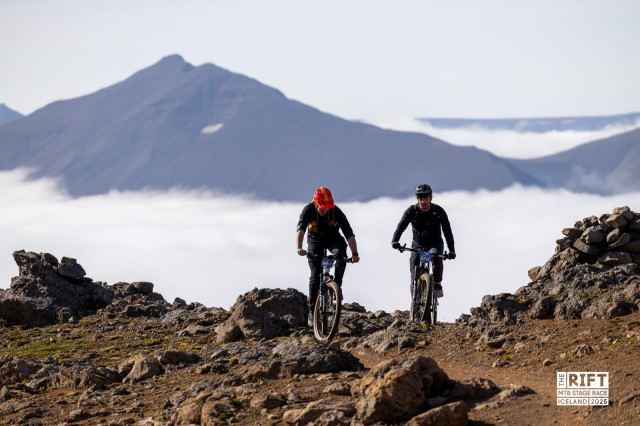About this time last year, I decided it was a good idea to have a crack at a cross-country race, and that idea snowballed pretty quickly into a multi-day stage race… the inaugural RiftMTB, in fact. Here’s what I learnt while tackling the race’s five days of hell-for-leather riding, despite having no previous experience with stage racing or riding big distances at all.
Before we get into the details, let me set the scene a little. Gravel riders will be well aware of the Rift. Now a stalwart event in the gravel calendar, the organisers decided to give the race a mountain bike spin after sampling the renowned Swiss Epic. The RiftMTB translates the Swiss Epic’s formula to North Iceland, where competitors in both Elite and Open categories rode nearly 300km and climbed 7,100 metres. Both the distance and elevation were completely uncharted territory for my as-yet (and still) unseasoned legs. Anyway, here’s what I took home after finishing the race.
Eat, eat, eat, and drink, drink, drink
I am the worst at fuelling myself. My casual Sunday bimbles are usually fuelled by granola and/or leftover pizza (oven-warmed, it’s better, trust me). I’ll admit, such poor fuelling would usually lead to me ending a ride early and heading to the nearest McDonald’s. Those rides are nothing in comparison to what the RiftMTB had in store, so eating regularly during the day is something I had to learn and practice.
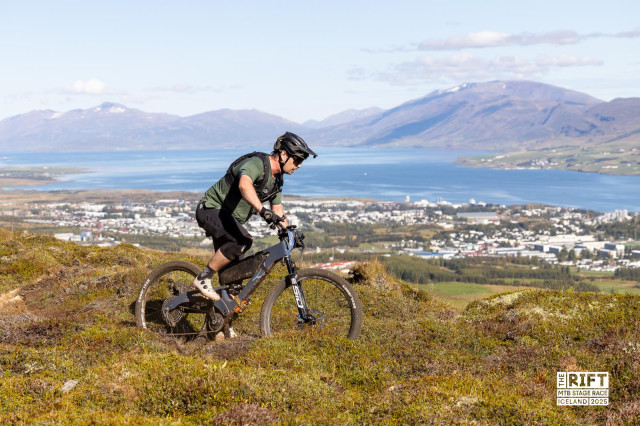
Big breakfasts, big dinners, and all of the energy chews, gels, and bars kept my energy at a good place, and stuffing my face was what helped me finish the race. I also set up a feed reminder on my cycling computer, and I tried my best to keep to that schedule. Of course, there are feed stations too, which served as an excellent place to stock up and chug a Pepsi.
Racing gets sweaty, too, so get going on the electrolytes. While dropping a tab into a bottle is fairly commonplace on my rides, being in the saddle for so long made proper hydration imperative to my performance. I even carried a spare pack of electrolytes in case I felt I needed the extra hydration boost.
Feeding doesn’t stop after the ride either. Good lunches and dinners are the first step to solid recovery for the next day’s riding.
But change up what you’re eating
Gels, chews, bars, whatever you like, tend to be super sweet. It makes sense, as they’re designed to give you energy, and sugar is a wonderful thing, but constantly getting sweet things into you can get very boring, very quickly.
.jpg)
Don’t rely solely on one type of energy consumable either. There are a slew of methods of getting carbs, electrolytes, and all sorts of good things into you that work best at certain periods of the ride. I found that eating an energy chew every so often kept me alert and capable, but when I was nearing a super punchy climb, or a descent I wasn’t quite feeling sharp enough for, a gel came in handy, activating a new level of energy.
Additionally, on a diet that consists nearly completely of energy products, be prepared for a bad stomach. That’s even with products that work well for you. Loading up on a higher volume of gels and such is a shock to the system, and you’ll know about it. Because of that, it’s important to train your stomach to cope with the increased level of carbs and weird stuff that’s typically in these foods.
It’s a marathon, not a sprint
This goes for any type of race, but it’s compounded when you’ve got five days to compete over. It’s like a bike park day – going too hard out of the gates can increase risk and end your day early. However, getting overexcited and hitting the pedals in a bid to hit warp speed early will unnecessarily increase fatigue and impact your performance for the next day.
Keep it cool, keep it well within your limits, and do your best to stay as fresh as possible for the rest of the race.
Bike setup is a compromise
I’m a trail and enduro rider first and foremost. That means that I’m setting my bike up for a good time on the descents with softer suspension, burlier and more aggressive tyres, and with a riding position to suit.
For the RitfMTB, at least, descending is but a small part of an otherwise big event. There was a lot of pedalling and an awful lot of climbing, so where I wanted to be comfortable on the descents, I had to think about how I could set up my bike to be fast on the pedals, and as easy to get up a hill as possible.

This meant fast rolling tyres. Thankfully, my bike was already sorted with that, but what came as a real surprise was that I found myself putting far more pressure into my tyres than I usually would. This was to help the bike roll faster on the road and smoother off-road surfaces that lined 70% of the course. Sticking with a more gravity-friendly setup initially compromised how fast I could go anywhere that wasn’t a descent, and I had to make life as efficient as I could.
This did impact the bike’s performance on the descents. As the tyre isn’t able to deform over bumps, traction wasn’t quite as generous as I would have liked, but again, the descents were a small part of the overall challenge. With that, a little less grip posed only a negligible downside in the grand scheme of things.
I also ran my handlebar lower on the steerer to help keep the front wheel in check while climbing, and had my saddle placed a little further back, both for comfort and to maximise rear wheel grip.
There’s always more in the tank
Before attempting the RiftMTB, I had never ridden more than 50km until a week before I flew out. In the weeks rolling up to the event, I was super anxious as to whether or not I could actually complete the days.
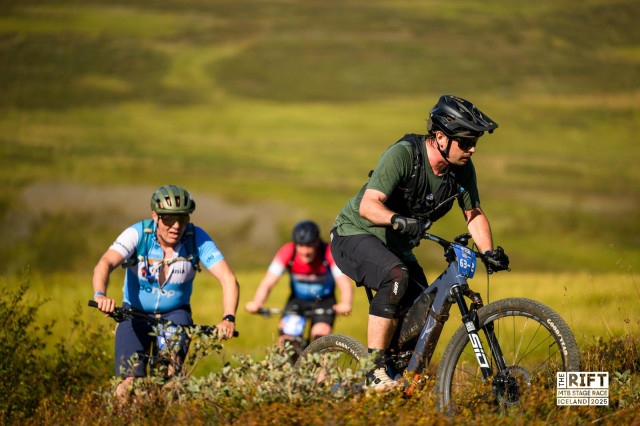
However, I did. The event took us deep into Iceland’s landscape and away from its already sparse civilisation, and it’s surprising what can be achieved when there’s simply no choice. My lowest point in terms of energy came when hike-a-biking up a 600 to 700m mountain, over six kilometres.
While hauling myself and my bike up the hill, I wanted to stop. But that would leave me halfway up a mountain with nowhere else to go but up. It’s surprising what energy I was able to muster to get the job done. Of course, proper fuelling paid back in dividends, making this more than possible.
But it goes to show that there’s a serious mental game at play. Staying somewhat positive but definitely determined made a brutal effort incredibly rewarding as we hiked above the clouds with one of the most incredible descents to see the day off with. That was only halfway through the race, too.
There’s little harm in over-preparing
As well as the RiftMTB being my first ever stage race, it was my first time flying with a bike, and thinking properly about how I could carry kit during the days. To put it briefly, I overprepared, and while it gave me more to think about, and perhaps pushed luggage weight limits a touch, it allowed me to be super flexible in how I chose to carry stuff for the race. And to be honest, I had no idea of what to expect from the event, so that touch of flexibility really helped me tailor my on-bike luggage for what I was about to undertake.
In with my bike, I packed kit straps, frame bags, a bottle, and mounts for other luggage-carrying accessories. I ended up settling on running a small backpack to carry fluids, food, a pump, a tiny Topeak shock pump, and other small bits and pieces. On the bike, I took full advantage of Granite’s Stash system, so tools were covered, and despite carrying straps and mounts, I settled on a frame bag to carry a jacket, spare camera batteries, and extra tubeless worms. I didn’t end up using all of that kit, and sure, some of it was overkill, but I employed an ‘I’d rather have it and not need it’ approach, which ended up working well enough.
Admittedly, if you’ve done big rides before, especially over multiple days, you likely already have a system that works for you. Stick with what you know, of course.
Know your kit inside and out
Bikes and all of their accessories can get mighty complicated. Although things like RockShox’s Flight Attendant, power metres, and all sorts of electronic wizardry can elevate a bike’s ride and make life with that bike much easier, it can all get very confusing, very quickly. When the worst strikes 30km from any form of civilisation, you’re going to need to know exactly how to fix whatever mishap occurs, or at least get it back into a rideable state to get back home.
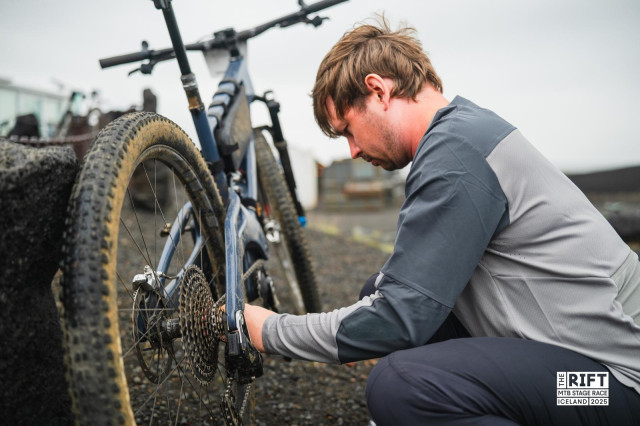
It can range from things like automatic suspension adjustment to CO2 inflators… Yep, I wasted two CO2 canisters to the wind while trying to repair the two punctures the team picked up during the week. It hurts to type that… But if I had known exactly how my CO2 inflator worked, we would have been back rolling much faster, and my ego would have been left intact.
Even the best saddle is going to hurt
During the first couple of days, I thought I had everything right. Thankfully, I’ve got a 3D printed saddle that’s custom-made for my own ass, and it works. I even doubled up on the comfort and slathered on the chamois cream, which is a very new sensation for me.
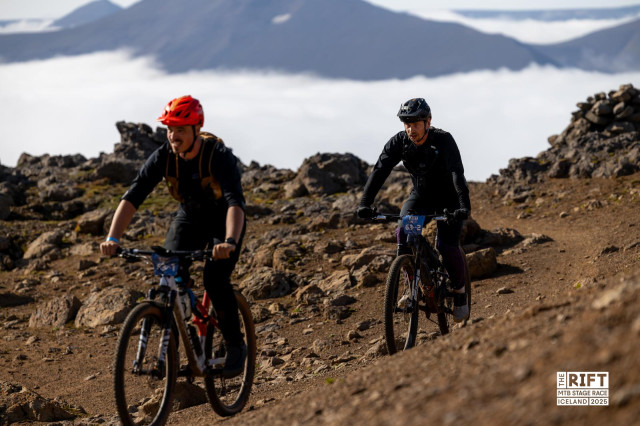
As I said, the first few days were perfectly fine, and a good dashing of hike-a-bike kept my sit bones away from the saddle for long enough to hide the bum-based fatigue that was about to hit home. Day four was then a long day on the pedals, and yes, it hurt.
The truth is that you’re going to be spending a lot of time with a good heft of your weight on a part of your body that doesn’t typically have to bear such a load. At some point, you’re going to know about that. It’s hard to do, but proper conditioning is the only way to solve it.
Swot up on your roadie tactics
When it comes to road cycling, my knowledge only goes as far as to recognise that road bikes exist, and the people who ride them ride on roads. Though I have seen those mental folk jump the peloton during the Tour de France.
That said, aero gains matter, and when I say aero gains, I mean tactics stolen from road riding. Never before have I stuck myself onto someone’s rear wheel, but man, doesn’t it make life easier? Especially in a headwind.
Tucking behind the rider in front helped me to preserve energy and travel a bit faster. Anything to reduce fatigue is well worth taking full advantage of, and if that meant becoming a pseudo-roadie for a few minutes, then call me a pseudo-roadie.
Find a good partner
I paired up with long-time ORCC reviewer come good friend, Ty Rutherford, for my bash at the RiftMTB, and out of everything that I learned, doing so was the best decision I had made (let’s not get too soppy). First off, it helps that we get on well. Imagine spending 20 hours over five days hating the person you’re riding with?

Firstly, having a friendly face about kept morale in a good place, even halfway up the side of a mountain. He was also pretty clever in withholding certain information, like the elevation we still needed to gain to keep my spirits up. Having a mate to ride with is also a big motivator in itself. We shared that adventure, and even though there were low points, every bit of it was fun.
Additionally, we were able to talk tactics. We knew we weren’t as accomplished road and gravel riders as most of the field, so we were sure to lose time on the flats and the climbs. However, we knew that our descending prowess (or whatever there is of that) was the trick up our sleeves.

With Ty being a talented downhiller, he chose to dial his speed back a touch so I could trustingly follow his lines. Although some were questionably frightening, all of them were quicker than what I’d have chosen myself. Not only did this all mean extra speed, but it meant that I could switch my brain off a touch and simply copy what he did. When deep into the ride, this helped me stay fresh mentally, making my riding safer and faster.
The fact that we were similarly able and similarly fit meant that we could keep up with each other because the last thing you want to do in a pairs race with a two-minute finishing rule is to lose the second half of the team.
You might also like:

